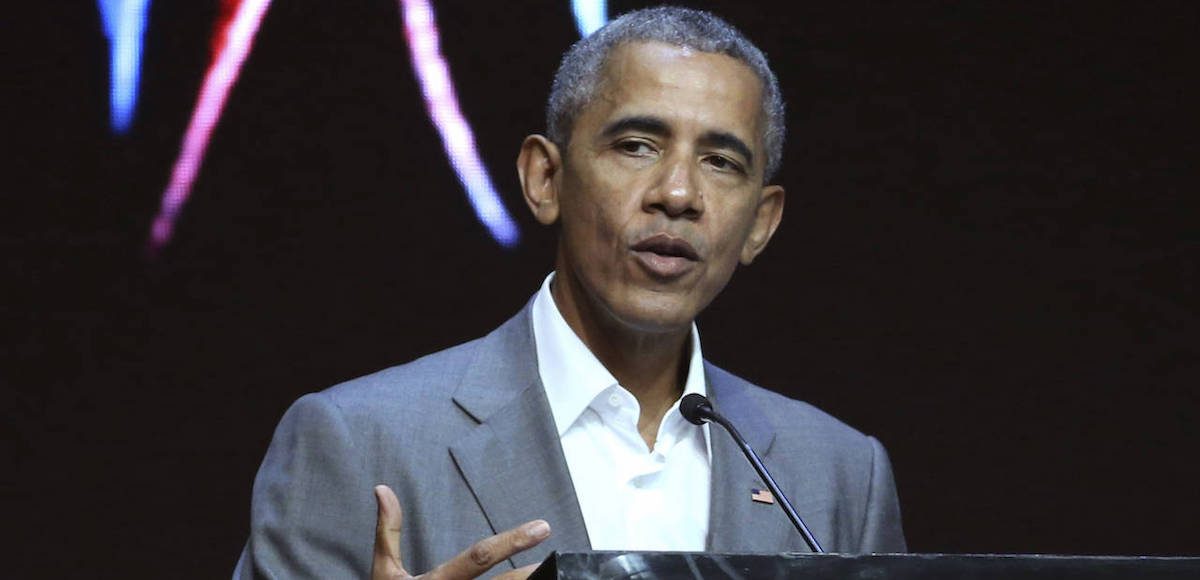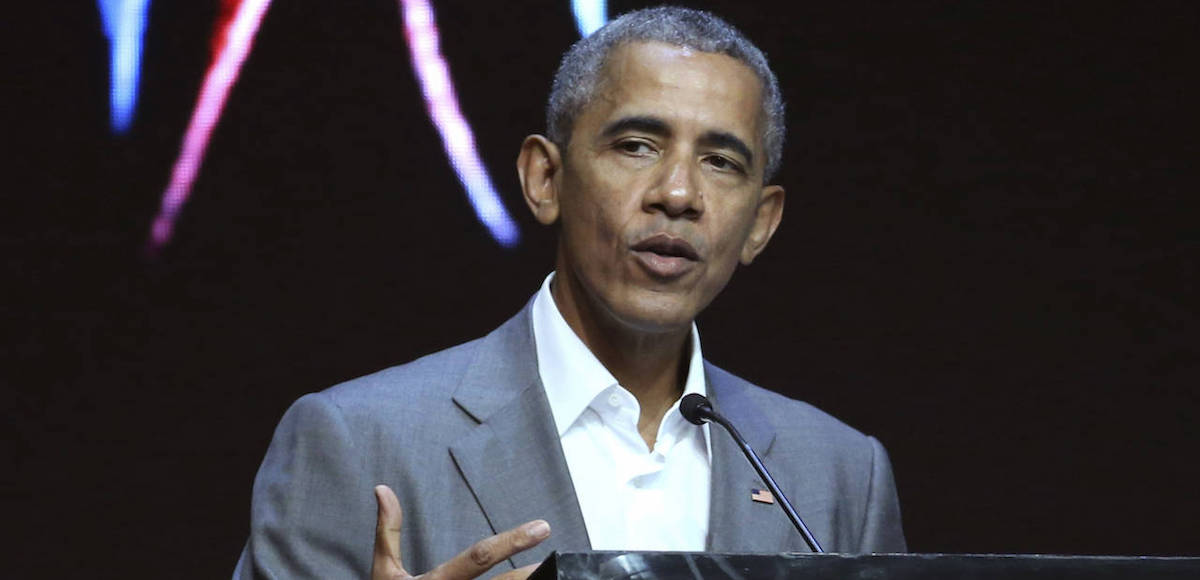

Former U.S. President Barack Obama delivers his speech during the 4th Congress of Indonesian Diaspora Network in Jakarta, Indonesia, Saturday, July 1, 2017. (Photo: AP)
I’ve learned that it’s more important to pay attention to hard numbers rather than political rhetoric. Republicans, for instance, love to beat their chests about spending restraint, but I never believe them without first checking the numbers. Likewise, Democrats have a reputation as big spenders, but we occasionally get some surprising results when they’re in charge.
President Obama was especially hard to categorize. Republicans automatically assume he was profligate because he started his tenure with a Keynesian spending binge and the ObamaCare entitlement. But after a few years in office, some were arguing he was the most frugal president of modern times.
- So I crunched the data in 2012 and discovered that he was either a big spender or a closet Reaganite depending on how the numbers were sliced.
- I then re-calculated the budget numbers in 2013 and found that spending grew at a slower rate the longer Obama was in office.
- And when I did the same exercise in 2014, using another year of data, Obama looked even more like a tight-fisted fiscal conservative.
Or, to be more accurate, what I basically discovered is that debt limit fights, sequestration, and government shutdowns were actually very effective. Indeed, the United States enjoyed a de facto spending freeze between 2009 and 2014, leading to the biggest five-year reduction in the burden of federal spending since the end of World War II. And it’s unclear that Obama deserves any of the credit since he was on the wrong side of those battles.
Anyhow, I’ve decided to update the numbers now that we have 8 years of data for Obama’s two terms.
But first, a brief digression on methodology: All the numbers you’re about to see have been adjusted for inflation, so these are apples-to-apples comparisons. Moreover, all my calculations are designed to show average annual increases. I also made sure that the “stimulus” spending that took place in the 2009 fiscal year was included in Obama’s totals, even though that fiscal year began (on October 1, 2008) while Bush was President.
We’ll start with a look at total outlays. On this basis, Obama is actually the most conservative President since World War II. And Bill Clinton is in second place.
President |
Total Outlays |
| Obama | 0.8% |
| Clinton | 1.5% |
| H. W. Bush | 1.8% |
| Reagan | 2.6% |
| Nixon | 3.3% |
| Carter | 4.0% |
| G. W. Bush | 5.1% |
| Johnson | 5.9% |
But total outlays doesn’t really capture a President’s track record because interest payments are included, which effectively means they get blamed for all the debt run up by their predecessors.
So if we remove payments for net interest, we get a measure of what is called primary spending (total outlays minus net interest). As you can see, Obama is still in first place and Reagan jumps up to second place.
President |
Total Outlays |
| Obama | 0.7% |
| Reagan | 1.9% |
| Clinton | 1.9% |
| H. W. Bush | 2.0% |
| Carter | 3.2% |
| Nixon | 3.3% |
| G. W. Bush | 6.0% |
| Johnson | 6.0% |
I would argue that one other major adjustment is needed to make the numbers more accurate.
There have been two major financial bailouts in the past 30 years, the savings & loan bailout in the late 1980s and the TARP bailout at the end of last decade. Those bailouts created big one-time expenses, followed by an influx of money (from asset sales and repaid loans) that actually gets counted as negative spending.
Those bailouts added a big chunk of one-time spending at the end of the Reagan years and at the end of the George W. Bush years, while then producing negative outlays during the early years of the George H.W. Bush Administration and Obama Administration.
So if we take out the one-time effects of those two bailouts (which I categorize as “non-TARP” for reasons of brevity), we get a new ranking.
Reagan is now in first place, followed by Clinton and Obama.
President |
Total Outlays |
| Reagan | 1.6% |
| Clinton | 1.7% |
| Obama | 2.1% |
| Nixon | 2.8% |
| Carter | 3.0% |
| H. W. Bush | 3.2% |
| G. W. Bush | 4.6% |
| Johnson | 6.0% |
By the way, Lydon Johnson has been in last place regardless of how the numbers are calculated, and George W. Bush has had the second-worst numbers.
For all intents and purposes, the above numbers are how a libertarian would rank the various Presidents since both domestic spending and military spending are part of the calculations.
So let’s close by looking at how a conservative would rank the presidents, which is a simple exercise because all that’s required is to remove military spending. Here are the numbers showing the average inflation-adjusted increase in overall domestic outlays for various Presidents (still excluding the one-time bailouts, of course).
By this measure, Reagan easily is in first place. Though it’s worth noting that three Democrats occupy the next positions (though Obama’s numbers are no longer impressive), while Republicans (along with LBJ) get the worst scores.
President |
Domestic Spending (Non-TARP) |
| Reagan | 0.6% |
| Clinton | 2.5% |
| Carter | 2.8% |
| Obama | 3.3% |
| G. W. Bush | 3.9% |
| H. W. Bush | 6.3% |
| Johnson | 6.5% |
| Nixon | 8.4% |
The bottom line is that Reaganomics was a comparative success. But should we also conclude that Obama was a fiscal conservative?
I don’t think he deserves credit, but I won’t add anything to what I wrote above. Instead, I’ll simply note that Brian Riedl of the Manhattan Institute has a good analysis of Obama’s fiscal record. Here’s his conclusion.
It is important to recognize that Obama did not stop trying to expand government after 2010. The president’s eight annual budget requests gradually upped their 10-year revenue demands from $1.3 trillion to $3.4 trillion, while proposing an average of $1.0 trillion in new program spending over the next decade. His play, in short, was to gradually trim the budget deficit by chasing large spending increases with even larger tax increases. The Republican Congress stopped him. My assessment: Obama’s most important fiscal legacy was a sin of omission. Despite promising to confront Social Security and Medicare’s unsustainable deficits, the president refused to endorse any plan that would come close to achieving solvency. This surrendered eight crucial years of baby-boomer retirements while costs accelerated. With baby boomers retiring and a national debt projected to exceed $90 trillion within 30 years, this was no small surrender.
In other words, the relatively good short-run numbers were in spite of Obama. And the long-run numbers were bad – and still are bad – because he chose to let the entitlement problem fester. But he was still better–or, less worse–than Bush I, Bush II, and Nixon.





